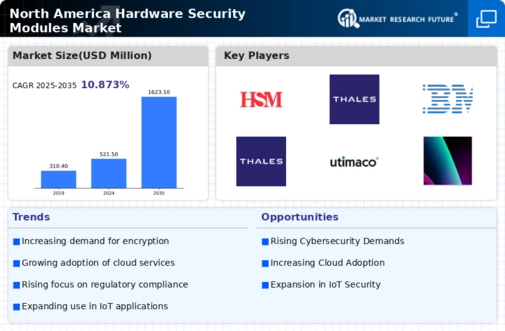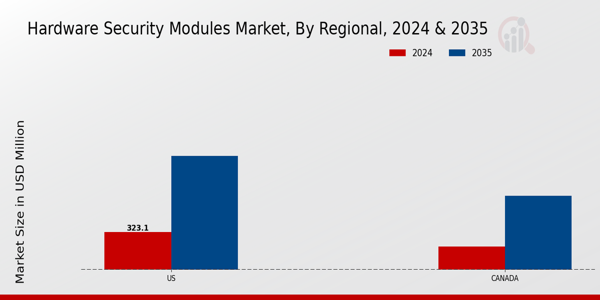The North America Hardware Security Modules (HSM) Market is characterized by a highly competitive landscape where companies strive to provide robust encryption solutions to safeguard sensitive data. This market has observed substantial growth due to the increasing adoption of cloud computing, the rising need for data security across various industries, and regulatory mandates for data protection. As enterprises continue to digitalize their operations, the importance of securing cryptographic keys and personal data has led to a heightened focus on HSM solutions.
Various players are investing heavily in technology advancements, aiming to enhance their product offerings and meet the evolving needs of customers.
The competition is marked by a mix of established corporations and emerging startups, each working to carve out their niche in this vital sector.HSM Solutions has established a notable presence in the North American Hardware Security Modules Market, emphasizing its commitment to providing high-performance security devices that protect sensitive information. Their offerings are designed to support various applications, including payment processing, digital signatures, and secure key management. One of the strengths of HSM Solutions is the ability to customize their products to meet specific client needs, making them a favored choice among enterprises requiring tailored security solutions.
Furthermore, HSM Solutions has leveraged partnerships with key technology providers to enhance its market presence, ensuring that it remains competitive in an ever-evolving industry landscape.
This adaptability, combined with a customer-centric approach, has allowed HSM Solutions to maintain a solid foothold in the region while responding effectively to emerging market trends. Gemalto has made significant inroads into the North American Hardware Security Modules Market, providing a diverse range of products that cater to the needs of various sectors such as finance, government, and healthcare. Their offerings in HSM technology are recognized for their reliability and compliance with industry standards. Gemalto's strengths lie in its innovative solutions that integrate both hardware and software components, enabling comprehensive security infrastructure for its clients.
They have also embarked on strategic mergers and acquisitions, bolstering their capabilities and expanding their service portfolio within the North American region. By consistently investing in research and development, Gemalto not only enhances its product line but also reinforces its market leadership position. Their established reputation for delivering effective, scalable security solutions ensures that they remain a key player in the competitive landscape of HSMs in North America.
























Leave a Comment